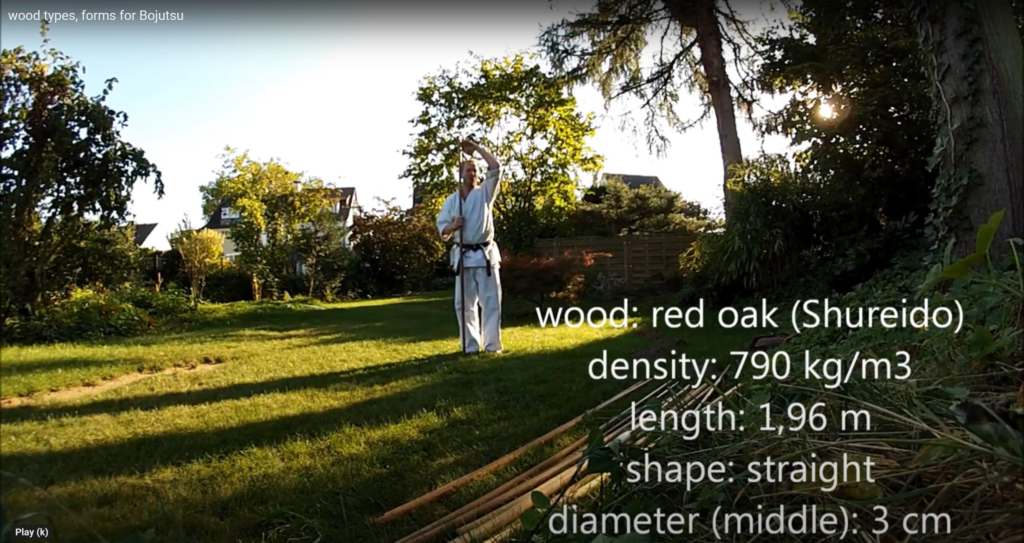In choosing or making a bo that suits your physics and your style of executing techniques, there are a few things to consider. In the following, I will list what I think are the most critical points.
1. Kind of wood (density, flexibility, availability, processability, price, nontoxic dust when processed…)
2. Lenght. This is because the length must suit your body length. However, most bo are of a standard length of about 6 feet (182cm). This standard length often does not fit smaller people (kids) or longer people. A bo should be at least the length of your height and better be a length of a hand or so longer.
3. The diameter needs to fit the user’s hands. For example, standard bo often have a diameter of 3cm, but this is much too large for children’s hands or people with smaller hands, so you should adapt it.
4. Shape: conical or straight.
5. Interaction of length, diameter, and density results in the weight, which is critical for handling. If the bo is too heavy, it will become difficult to accelerate and decelerate, making it more difficult to control and manipulate. If it is too light, it is not a weapon.
6. Length and direction of fibers. The wood should have a high resistance against fracture: heavy and hard doesn’t mean it doesn’t break. Long fibers are usually a good sign, and they should be parallel to the form of the bo.
7. Lack of enclosures, so the bo should be knotless and have no wormholes. I had bo that had enclosures and wormholes. Both are dangerous because they may result in fractures during kumite. There is even wood that is so bad it will break from its own inertia when swung forcefully.
8. Resistance to insects and decay.
In the table below, I give a few examples of number 4, i.e., the resulting weights in kg for varying diameters (2; 2,5; 3 cm), length (182; 196 cm), and woods with different density.
For example, a Rattan bo of 2 cm diameter and 186 cm length will weigh about just little less than 300 grams, which is almost nothing. A 3/182 cm Rattan bo will weigh about 640 grams, which is still light. A 3/182 cm red oak will weigh about 1 kg, and a 3/196 cm ironwood will weigh 1,56 kg. Handling these different bo takes a completely different technique. Many people prefer light bo. It has the advantage that you can act fast and easy, and also children and women easily adapt. However, it often leads people to skip proper transitions, so there is almost no technical and artistic improvement over time.

In accelerating and decelerating a bo, every gram counts. That is why these differences are so important.
Another point is the standard weights used in tournaments. Of course there should not be a standard bo of 3 cm diameter and 182 cm length for everyone, but it should be individually accustomed to height and body weight, even among adults. A 100 kg man should have to use a heavier bo than a 50 kg female, and probably with a different diameter.

© 2020, Andreas Quast. All rights reserved.
